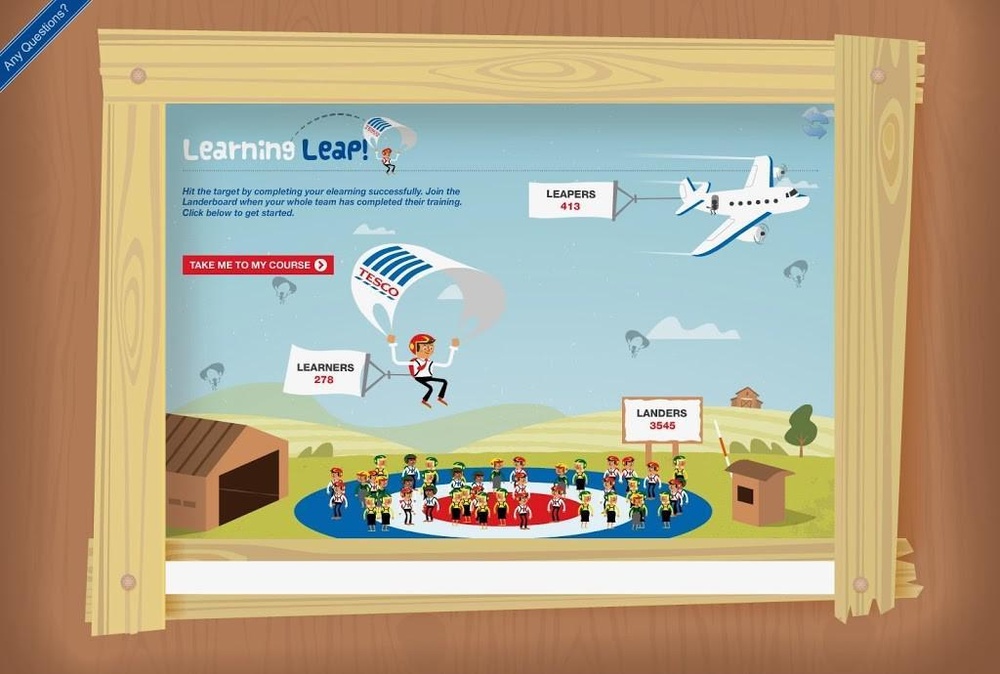When to offer your employees an elearning course


Your employees will benefit most from an elearning course if they can access it at the best possible moment.
Sometimes, it’s the right course but it’s deployed at the wrong time, or in the wrong way.
This post looks at some of the factors to consider before deciding when to launch your new elearning course.
Business-focused drivers
There are internal and external drivers that may affect your elearning timetable. We've picked out some instances where timing is critical.
Internal
A change in company leadership or an internal review often brings with it the need to introduce a new corporate culture. Making a company-wide shift will involve a broad range of roles and requires detailed planning.
Taking time to plan an L&D campaign should be the first step. An elearning course that sets the scene for the rest of the programme is a good way to spark employee interest.
Tesco used this technique with their Learning Leap campaign. After an extensive review of their current compliance training, they decided on a new approach with an elearning course at its heart.

These kinds of programmes target a wide range of employees and must be carefully planned and delivered.
In such cases, your elearning course’s longevity is more important than getting it out quickly. Make sure the high level vision is set out before introducing your elearning course to the rest of the workforce.
Sometimes, it’ll be an existing situation that needs addressing. Emma Barrow talked about this process in her presentation at Learning Technologies 2016. She took interactive video and put it to good use at The Royal Mail to help address a need for change in how managers dealt with difficult conversations.
External

Some of the biggest external factors are legal and regulation changes that introduce new compliance requirements.
New regulations are often phased in to allow companies to get the training they need out to the employees affected.
Pension reforms for example, meant many small and medium-sized businesses in the UK had to roll out training for their staff.
The requirements were set out in advance of the regulations coming into effect. L&D teams had time to prepare a strategy for training, often including an elearning course.
By offering training early in the process, you allow learners to return to it and repeat complex elements.
Changes in the market are more challenging to prepare for. Dramatic changes and disruptive technologies are some of the harder business influences to predict.
Is earlier better in these cases? Should you create and offer your learning as soon as possible to be best prepared for the change?
A knee jerk reaction to this type of change can be a bad idea. Your elearning course runs the risk of being obsolete before being of benefit.
In this case, it can be better to address the skills you need to meet a challenge, rather than the specific challenge itself. Training your managers to handle the changes and pass this on to employees could pay off.
Learner-focused drivers
Preboarding
When do your employees need to know the information for their first day? Before they arrive.
Preboarding or preinduction starts the orientation process before day one of the new job. Top performing companies use this strategy to reduce the time to competency for new starters.
Giving employees a head start with preboarding can lead to significant cost savings. Reducing time to productivity for new staff avoids many hidden costs.
You should also consider extending your induction elearning course beyond a month to get the most out of the process. Spreading out an induction course makes it easier to naturally lead a learner into more online training.
Social learning
The 70:20:10 principle:
70% of learning working on tasks and problems, 20% from feedback and examples and 10% from formal training.
Your employees are already engaged in social collaboration. Observing this helps you identify the remaining 10% that requires formal training.
Making sure you’re not controlling the social interactions is important. It allows employees to discover the areas that need the extra work for themselves.
An engaged L&D team will keep track of informal learning and identify areas which can be supplemented with a formal elearning course.
On demand elearning
Your employees are using their phones to access the internet more than desktop computers. It’s a global trend and one that isn't slowing down, especially in the workplace.
Towards Maturity has just published a new report In Focus: Learning and Performance on the Move. It’s a wakeup call for organisations who aren't already making their learning available on all devices.
The report reveals that out of the companies surveyed:
- 87% see “accessing support at the point of need” as a driver for mobile learning, but only 11% achieve it
- 32% think a small screen size is not suitable for their digital training content
When asking the learners themselves, 74% responded that they use their mobile to access resources for work. Thinking about making your content suitable for both mobile and desktop is important.
You can make sure it’s accessible for everyone at any time by using multi-device technology like Adapt. It helps create one course that works equally well on desktop and mobile devices.
Let’s recap the key points:
When should you launch an elearning course?
- Once business goals are defined
- To launch a campaign
- When a learning need matches an innovative solution
- Before new regulations come into effect
- To prepare for changing markets
How can you make the course accessible when it’s needed?
- Offer induction before new starters arrive
- Offer courses that complement natural social learning
- Make elearning courses that work on all devices
Using an elearning course rather than face-to-face training can help your employees benefit from all these techniques.